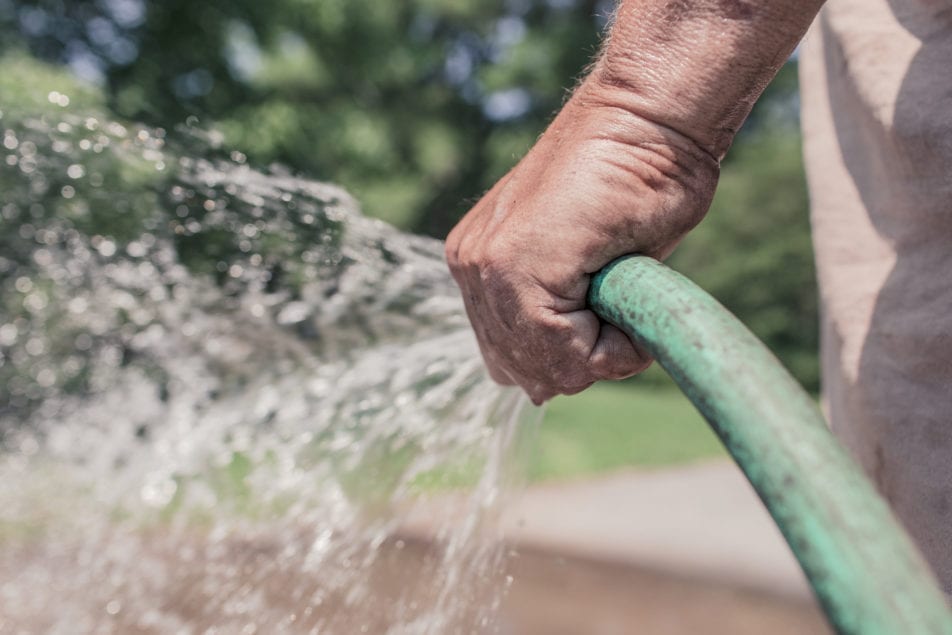Watering your new landscape correctly is key to ensuring its healthy establishment and growth. Here’s a step-by-step guide to help you water effectively:
1. Watering Right After Installation
- Water Immediately: As soon as your landscape is installed (plants, grass, trees, etc.), give everything a deep watering. This helps settle the soil and remove any air pockets.
- Deep Soak: Use a slow, steady flow of water to ensure it penetrates deep into the soil—about 4-6 inches deep for most plants and lawns.
2. Watering Frequency (First Few Weeks)
- Frequent Watering: For the first few weeks, you’ll need to water more often (usually 2-3 times a week, depending on the weather). This is to help establish roots.
- Watering Time: Water early in the morning (before 9 AM) or in the evening (after 6 PM) to reduce evaporation loss and prevent fungal diseases.
- Monitor Soil Moisture: Stick your finger into the soil a few inches deep to check moisture. If it’s dry, it’s time to water again.
3. Gradual Adjustment (1-3 Months After Installation)
- Reduce Watering Frequency: As your landscape plants begin to establish themselves, reduce the watering frequency. You should transition to watering once or twice a week, depending on the weather and your plant types.
- Water Deeply: When you water, make sure to water deeply (again, about 4-6 inches for plants, and deeper for trees).
4. Watering Established Landscapes (Beyond 3 Months)
- Water Based on Season: During the hotter summer months, you may need to water more often. In cooler months, reduce watering. Established plants and lawns generally need less frequent watering.
- Adjust for Rain: Always consider rainfall in your watering schedule—if it’s rained recently, skip or reduce watering.
5. Watering Techniques
- Drip Irrigation: Best for shrubs, trees, and garden beds. It delivers water directly to the root zone with minimal evaporation.
- Sprinklers: For lawns, overhead sprinklers work well, but make sure they’re covering the lawn evenly.
- Soaker Hoses: These are great for flower beds and vegetable gardens, as they release water slowly along the length of the hose.
- Watering Cans or Hose: For small areas or delicate plants, hand-watering gives you control over the amount of water.
6. Tips for Lawn Watering
- Early Morning Watering: This helps reduce disease risk and gives your lawn a head start before the sun hits.
- Deep Watering: Water deeply to encourage deep root growth, which helps your lawn withstand heat better. Aim for about 1 to 1.5 inches of water per week.
- Avoid Overwatering: Lawns don’t like soggy soil. Check the soil’s moisture level before adding water.
7. Special Considerations
- New Trees: Water new trees generously during the first couple of seasons. Tree roots take longer to establish, so deep watering is essential.
- Mulch: Apply mulch around plants to help retain moisture in the soil and reduce the frequency of watering.
8. Signs of Underwatering or Overwatering
- Underwatered: Leaves may curl, brown, or look dry. Plants may droop or show stress signs.
- Overwatered: Yellowing leaves, root rot, or soggy soil. Plants may appear wilted or stunted.
With these tips, you’ll set up your landscape for healthy, long-term growth. Adjust based on your specific environment (temperature, soil type, plant varieties), and don’t forget to monitor your landscape’s needs regularly! Don’t hesitate to contact us with any questions!






